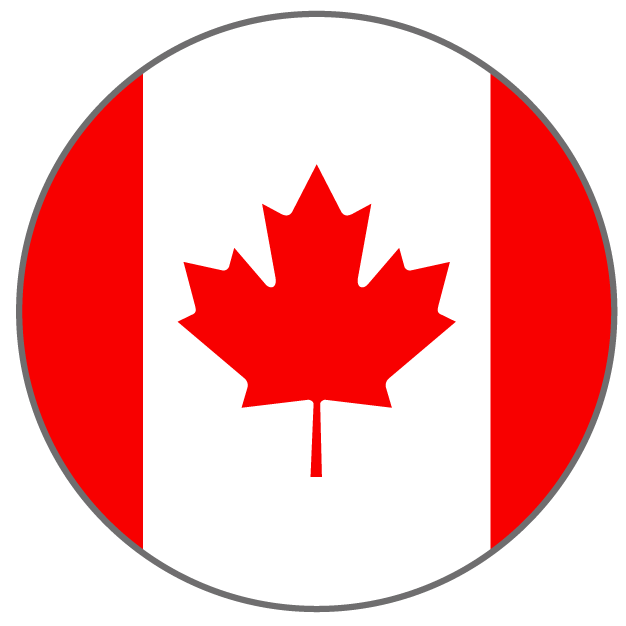Highlights
- Cracks in the economic backdrop not big enough to prevent further central bank rate hikes
- Inflation is (mostly) moving in the right direction, but slowly
- Slower consumer spending to push the Fed and the BoC to the sidelines later this summer, but risks of more interest rate hikes if needed
- Surging population growth adding to Canadian consumer demand
Resilient economic growth and sticky inflation are pressuring central banks to push interest rates higher, even as headwinds from higher prices and debt payments build. The Bank of Canada hiked the overnight rate by 25 basis points for a second straight month in July, with the Fed likely to follow with their own 25 bp increase later this month after a brief pause in June. We expect both the Fed and the BoC to pause after those increases, provided inflation continues to soften. The ECB looks on track for another 50 basis points of hikes. The BOE has been an outlier as a surge in price growth in the U.K. bucks the trend of easing inflation elsewhere. The BOE re-accelerate the pace of interest rate increases with a 50 bp hike last month.
Still, while economic growth in most regions has been more resilient than expected, there are also still signs of softening under the surface. PMI surveys globally are pointing to softer manufacturing activity as consumer demand for goods cools and growth in China slows. Concerns about acute near-term risks in the U.S. regional banking sector have largely calmed but banks are still tightening credit conditions. Household delinquency rates are already rising despite exceptionally strong labour markets as higher prices and debt payments cut into household purchasing power. And those unemployment rates will not stay this low as labour demand continues to show early signs of cooling.
Ultimately, central bank policy moves will be driven by the current and expected path of inflation. And odds have increased that interest rates will have to stay higher for longer than previously expected. Price growth has been moving in the right direction (with the notable exception of the United Kingdom), but slowly. And there are good reasons to think that central banks will need to work harder than they have in the past to keep inflation at target in the longer-run due to long-run structural shifts in the economy. We continue to expect GDP to post small declines in the second half of 2023 in the U.S. and Canada, and unemployment rates have already started to increase (up 0.2 ppts and 0.4 ppts as of June, respectively, from multi-decade lows in the spring.) But sticky inflation, in part driven by persistent domestic consumer demand means we now don’t expect the first cut from the Fed until Q2 of next year, and the BoC not beginning to lower interest rates until a quarter after that.
Central bank bias
Central Bank
Current Policy Rate
(Latest Move)
Next move
 BoC
BoC
5.00%
+25 bps in Jul-23
0 bps
in Sep-23
 Fed
Fed
5.00-5.25%
+25 bps in May-23
+25 bps
in Jul-23
 BoE
BoE
5.00%
+50 bps in Jun-23
+25 bps
in Jul-23
 ECB
ECB
3.50%
+25 bps in Jun-23
+25 bps
in Jul-23
 RBA
RBA
4.10%
+0 bps in Jul-23
+ 25bps
in Aug-23
Inflation has been slowing. But not fast enough
Headline CPI growth has slowed sharply in Canada and the U.S., with energy prices running well-below year-ago levels. But price growth overall is still above target rates. And central banks will be focusing more on domestically driven price pressures – largely in service sectors that are less sensitivity to changes in global commodity prices – for more signs that decelerating price growth will have staying power.
Those broader domestically driven inflation pressures have also been moderating – U.S. inflation surprised broadly on the downside in June, including a sharp slowing in price growth for services excluding shelter costs (a measure Federal Reserve officials have been keying on). Growth in home rents have been increasingly driving U.S. core (excluding food and energy) inflation growth. But that should continue to slow as the lagged impact of slower growth in current market rent prices flow through with a lag as leases are renewed. Inflation rates in Canada are increasingly boosted directly by higher interest rates via surging mortgage interest costs, but the BoC’s preferred ‘trim’ and ‘median’ price measures (designed to be better gauges of longer-run underlying price pressures) have still been running around 3 ½% at an annualized rate over the last three months, alongside stronger growth in ‘core’ service prices ex-shelter.
The headline inflation rate has also turned a corner in Europe and the United Kingdom. More worrying however is the fact that core inflation has been much stickier – and has accelerated noticeably in the U.K. The latest June ECB meeting presented upwardly revised the medium-term inflation outlook, alongside ECB president Lagarde’s comment that another 25bp rate hike in July is very likely. The latest round of economic data, including retail sales, industrial production and PMIs however, is starting to look softer.
Surging wages may help explain part of the acceleration in core inflation in the U.K., along with increased costs tied to the Brexit. Amid clear signs of persistent price pressures, the BoE took the Bank Rate to 5% through a bigger 50bp hike in June, a reacceleration since the pace of rate hikes was normalized down to 25bp in March. The guidance remained unchanged, that more persistent price pressures will lead to more rate hikes. Persistent inflation alongside elevated domestic services activities out of the UK, is likely serving as a cautionary tale to other global central banks.
Is the consumer ‘tapped out’?
Households haven’t yet buckled under the pressure of higher interest rates and inflation. But spending growth has been slowing. Delinquency rates on (non-housing) consumer debt have been rising, and that is with the unemployment rate still running around multi-decade lows. Spending continues to be distorted by pent-up demand from the pandemic – purchases of discretionary services have remained very firm and auto purchases have increased as supply of vehicles improves after years of shortages. But labour demand continues to slow as headwinds from the lagged impact of interest rate increases build.
In Canada, mortgage interest costs are up 30% from a year ago and required debt payments was already edging close to a record share of disposable incomes in Q1. There are signs that those higher mortgage payments are cutting into spending elsewhere. Consumer delinquency rates on non-mortgage loans (consumers tend to miss payments on other loans before mortgages) were back above pre-pandemic levels as of Q1. Exceptionally strong labour markets have still been supporting consumer spending, but the Canadian unemployment rate has begun to tick higher. And more weakness is in the pipeline, as labour demand is expected to further recede, adding to job losses that in turn puts more pressure on household purchasing power.
In Canada, population growth boosting economic growth
Surging population growth is setting Canada apart – higher federal immigration targets and a jump in arrivals of non-permanent residents on work permits pushed overall population up 3% from a year ago in Q1 2023. Some of that population surge will be temporary, for example as earlier backlogs of visa applications clear. But immigration rates will remain high, and that is driving an acceleration in population growth at a time when most of the rest of the world is slowing. Indeed, Canada looks to be on pace to outrun most of the rest of the world in population growth for the rest of the 2020s – including most other advanced economies as well as larger emerging market economies like China and India.
A rising population to some extent floats all boats. A larger available workforce helps to fill open positions when labour shortages are still a significant issue in the economy, increasing the productive capacity of the economy. But each newcomer is also a consumer that increases demand for goods and services. And the newly arrived population could be less sensitive to interest rate changes because home ownership rates among recent arrivals is lower.
High population growth is already making a difference. Stronger-than-expected growth in consumer spending to Q1 has been supported largely by simply having more consumers in the economy. Spending volumes (excluding price impacts) per-person were little changed in Q1 compared to pre-pandemic levels, suggesting that households are indeed being stretched by higher prices and borrowing costs more than headline total growth numbers might imply.
And housing markets (where it takes a long time for increased supply of homes to rise to meet increased demand) have bottomed out earlier than expected.
Employment growth in 2023 has remained historically very strong, but the there are signs that the pace new labour force participants are being absorbed into the workforce is slowing with the unemployment rate edging up 0.4 percentage points over May and June. And wage growth has slowed in lockstep alongside reports that the intensity of labour shortages is easing.
Can higher population growth prevent a ‘recession’? We don’t expect that to be the case – there have been enough signs that consumer spending headwinds are building to offset stronger population growth tailwinds – but does increase the odds that the pullback in GDP we expect will be ‘mild’ by historical comparison.
Download full PDF report including forecast tables:
This article is intended as general information only and is not to be relied upon as constituting legal, financial or other professional advice. A professional advisor should be consulted regarding your specific situation. Information presented is believed to be factual and up-to-date but we do not guarantee its accuracy and it should not be regarded as a complete analysis of the subjects discussed. All expressions of opinion reflect the judgment of the authors as of the date of publication and are subject to change. No endorsement of any third parties or their advice, opinions, information, products or services is expressly given or implied by Royal Bank of Canada or any of its affiliates.


 Learn More
Learn More